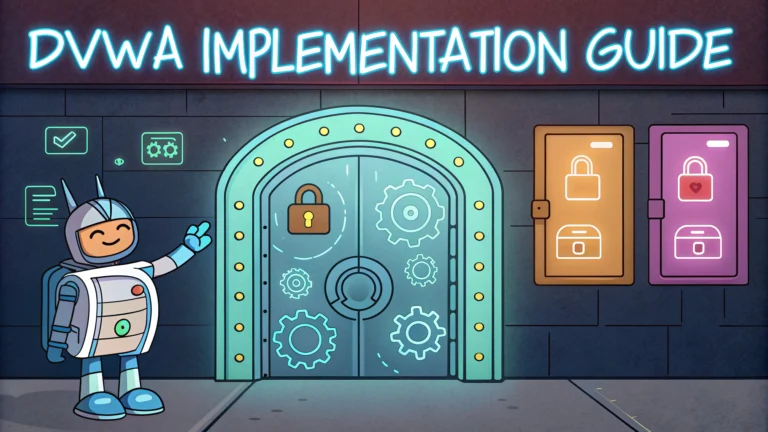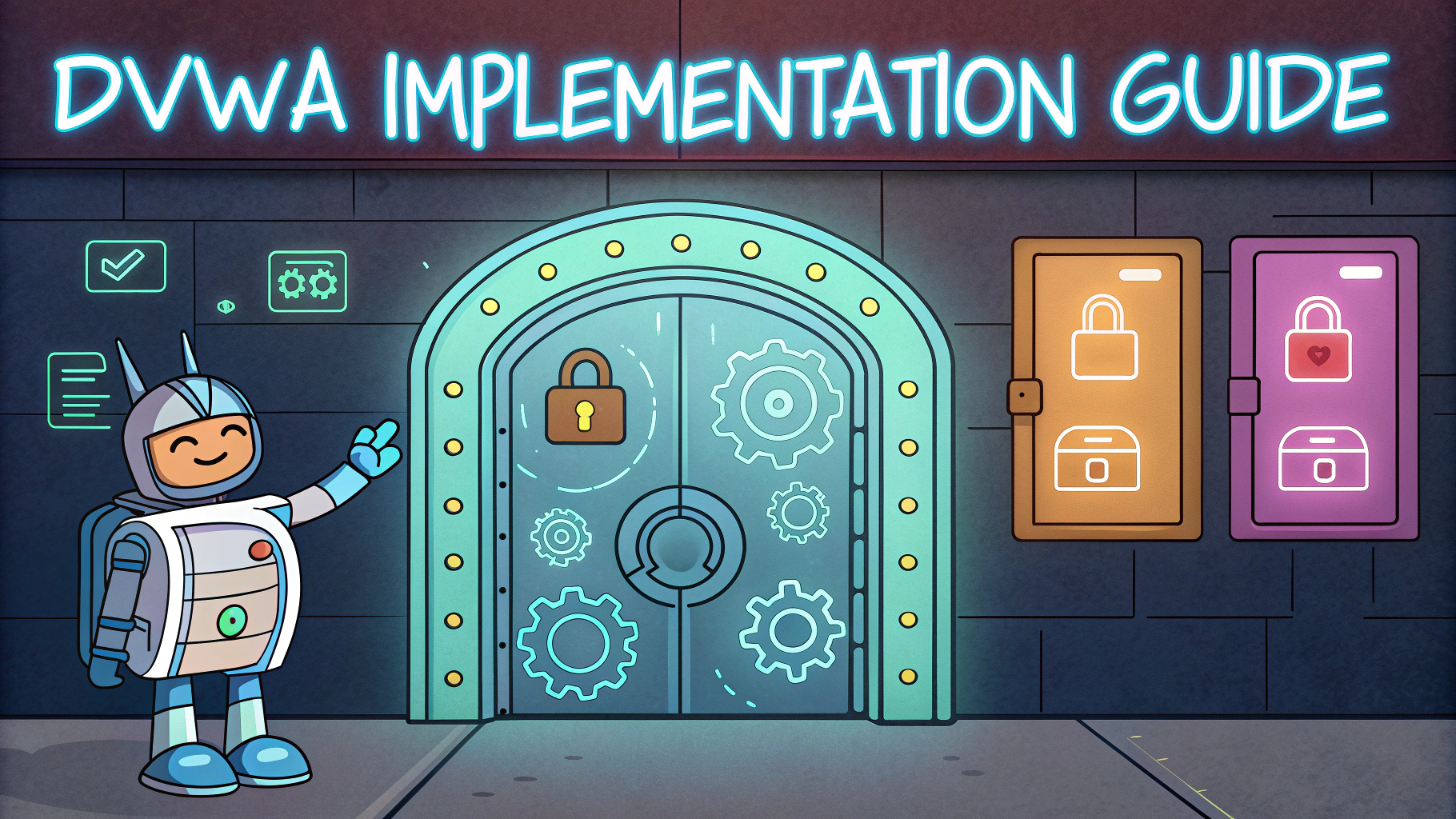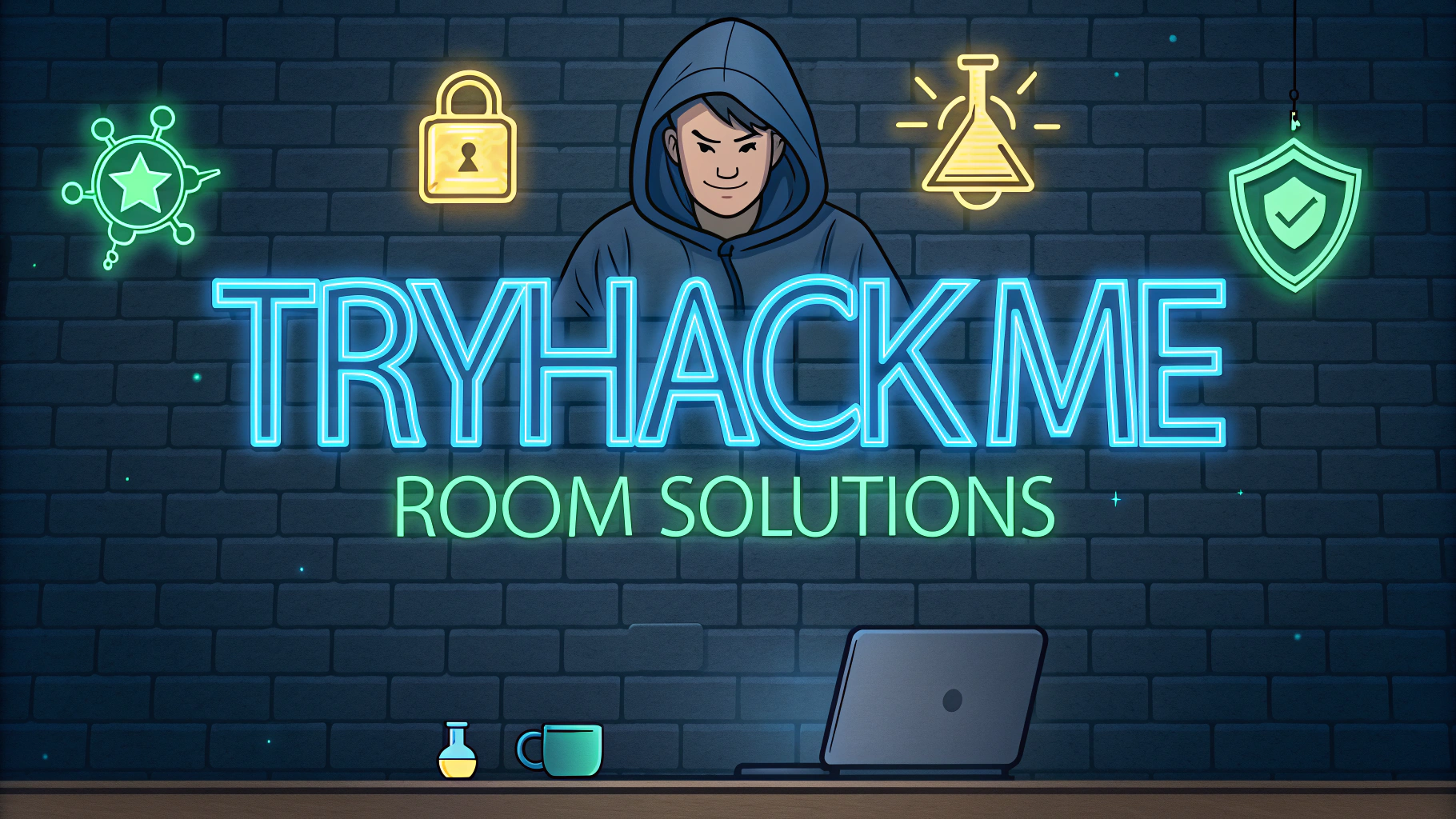DVWA (Damn Vulnerable Web Application) serves as a practical testing environment for security professionals and developers to understand common web vulnerabilities.
This guide walks through setting up and using DVWA effectively for penetration testing practice and security assessments.
Whether you’re preparing for security certifications or improving your practical skills, DVWA provides hands-on experience with real-world vulnerabilities.
Setting Up DVWA
Download DVWA from the official GitHub repository: https://github.com/digininja/DVWA.
- Install dependencies: PHP, MySQL, and Apache/Nginx
- Configure config.inc.php with database settings
- Set appropriate file permissions
- Access setup page and create/reset database
Security Levels
DVWA offers four difficulty levels to practice different security scenarios:
| Level | Description |
|---|---|
| Low | No security measures, ideal for beginners |
| Medium | Basic security controls implemented |
| High | Strong security measures in place |
| Impossible | Properly secured implementation |
Available Vulnerabilities
- Brute Force Authentication
- Command Injection
- CSRF (Cross-Site Request Forgery)
- File Inclusion
- File Upload
- SQL Injection
- XSS (Cross-Site Scripting)
Testing Tools Integration
Common testing tools that work well with DVWA include:
- Burp Suite for proxy interception
- OWASP ZAP for automated scanning
- SQLmap for database testing
- Metasploit for exploitation
Best Practices for DVWA Testing
- Start with low security and progressively increase difficulty
- Document all findings and solutions
- Use different tools for each vulnerability type
- Practice both manual and automated testing
- Review source code to understand vulnerabilities
Security Considerations
Never deploy DVWA on production servers or public-facing environments.
- Run DVWA in isolated environments only
- Use virtual machines or containers
- Disable internet access when possible
- Reset the environment after testing
Moving Forward with Web Security
Regular practice with DVWA builds practical skills essential for real-world security testing.
Join the DVWA community on GitHub for updates and discussions: https://github.com/digininja/DVWA/issues.
Consider exploring other vulnerable applications like OWASP WebGoat or Juice Shop after mastering DVWA.
Advanced Testing Scenarios
Beyond basic vulnerability testing, DVWA enables complex attack simulations:
- Chaining multiple vulnerabilities
- Session manipulation techniques
- Custom exploit development
- WAF bypass methods
Reporting and Documentation
Creating Test Reports
- Document vulnerability discovery process
- Include screenshots and proof of concepts
- Detail remediation steps
- Track success rates across security levels
Knowledge Base Development
- Maintain personal vulnerability database
- Record successful exploitation methods
- Document failed attempts and lessons learned
- Create custom testing templates
Skill Development Path
Progress through DVWA challenges systematically:
- Master one vulnerability type before moving to next
- Combine manual and automated approaches
- Create custom scripts for repeated tasks
- Share findings with security community
Strengthening Web Security Knowledge
DVWA serves as a foundation for understanding web security fundamentals and advanced exploitation techniques. Regular practice enhances both offensive and defensive security capabilities.
Stay connected with the security community through forums and contribute to open-source security tools to further develop expertise in web application security testing.
FAQs
- What is DVWA and what is its primary purpose?
DVWA (Damn Vulnerable Web Application) is a PHP/MySQL web application intentionally designed to be vulnerable. It serves as a legal platform for security professionals to test and improve their penetration testing skills in a controlled environment. - Which security vulnerabilities can be tested in DVWA?
DVWA includes vulnerabilities like SQL Injection, Cross-Site Scripting (XSS), Command Injection, File Inclusion, File Upload vulnerabilities, CSRF (Cross-Site Request Forgery), Weak Session IDs, and Brute Force attacks. - What are the different security levels in DVWA?
DVWA offers four security levels: Low, Medium, High, and Impossible. Each level implements different security controls, allowing users to understand how various protection mechanisms work. - What are the system requirements to run DVWA?
DVWA requires PHP 5.3 or higher, MySQL database, Apache web server with PHP support, and compatible web browsers. It can be run on platforms like XAMPP, WAMP, or standalone web servers. - How can I reset the DVWA database?
The database can be reset by clicking the “Setup/Reset DB” button in the DVWA interface. This resets all database content to its original state and is useful when practicing different attacks. - Is DVWA legal to use?
DVWA is legal when used in a controlled, private environment for educational purposes. It should never be deployed on public servers or used to attack real systems. - Can DVWA be integrated with penetration testing tools?
Yes, DVWA can be tested using various penetration testing tools like Burp Suite, OWASP ZAP, SQLmap, and Metasploit. It’s designed to be compatible with standard security testing tools. - What security considerations should be taken when running DVWA?
DVWA should be run in an isolated environment, preferably on a local machine or private network. It should never be exposed to the internet, and strong passwords should be used for the admin interface. - Does DVWA support different languages and configurations?
DVWA supports multiple languages for its interface and can be configured with different PHP configurations. Users can modify the config file to adjust settings like default security level and database credentials. - How frequently is DVWA updated?
DVWA is maintained on GitHub and receives updates to add new vulnerabilities, fix bugs, and improve compatibility with newer PHP versions. Users should regularly check the official repository for updates.








